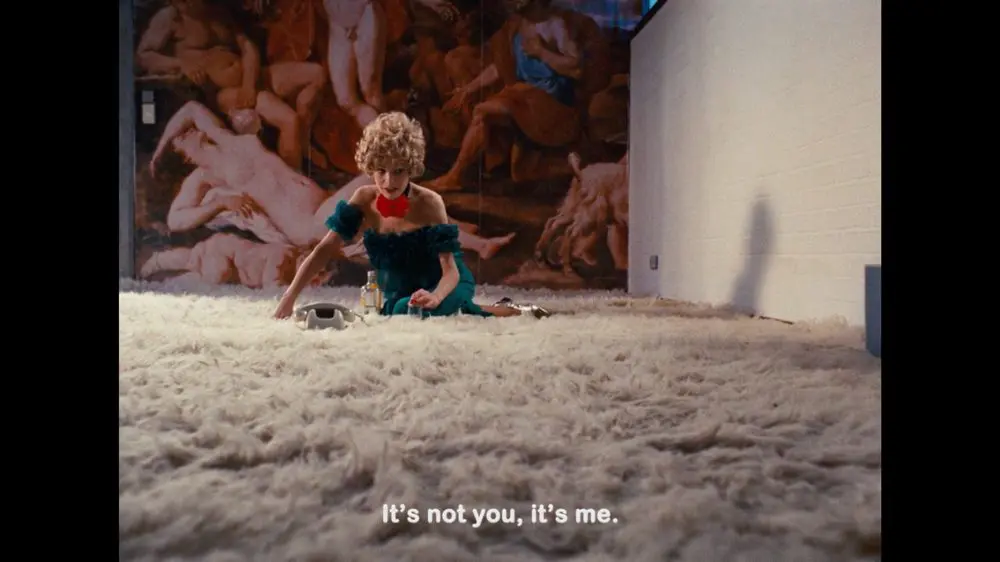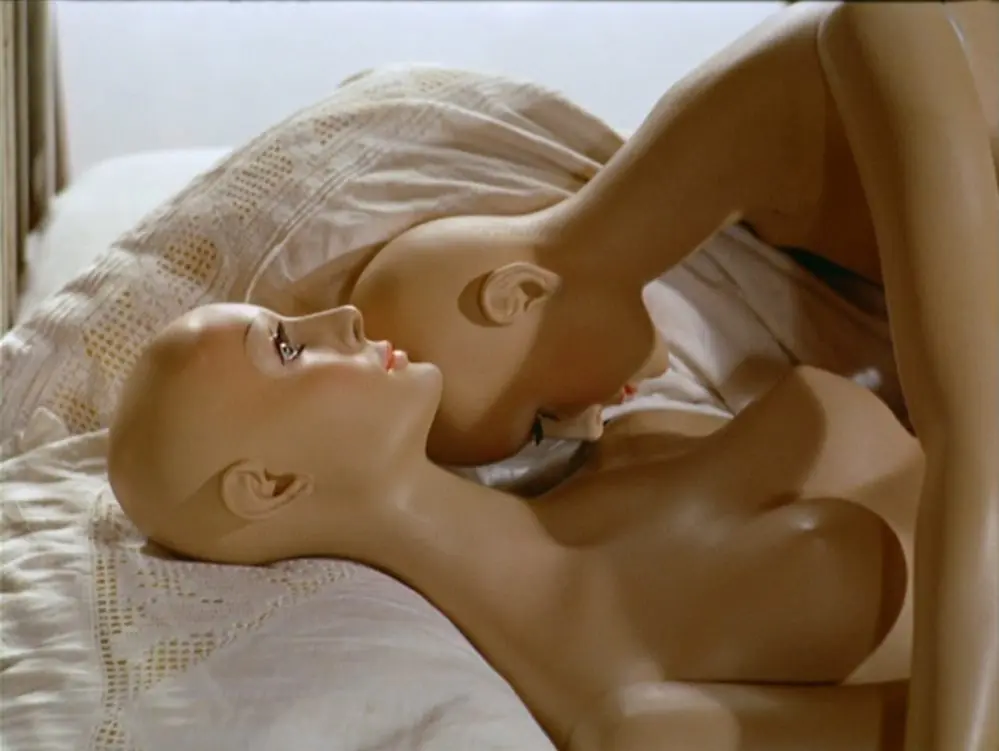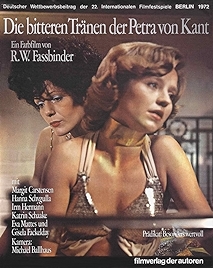Though he had 40+ films to his name when he died in 1982 aged 37, Rainer Werner Fassbinder’s roots lay in the theatre and it often showed.
They’re clearly visible in The Bitter Tears of Petra von Kant, a film playing out on one set where a handful of actors perform in a theatrical “back of the room” style.
The action, what little of it there is, takes place in and around the bed of Petra von Kant (Margit Carstensen), a massively entitled fashion designer attended by an entirely silent aide, Marlene (Irm Hermann). As Marlene brings coffee, cake, champagne, opens doors to let people in and out, types letters and between times busies herself with drawings for new designs – does all the work, in other words – Petra is visited by a friend, Sidonie (Katrin Schaake), who introduces Petra to Karin (Hanna Schygulla), a beauty who in short order shares Petra’s bed only to eventually decide that a sneer suits her better than sex (hence Petra’s tears).
Petra’s mother (Gisela Fackeldey) and daughter (Eva Mattes) also get walk-ons towards the end but the bulk of the drama focuses on the powerplay between Petra and Karin – haughty Petra wooing Karin with offers of modelling work, only to find the tables turned when the relationship becomes more established and her passion isn’t returned with as much force as she hoped.
Karin is a working-class girl in elevated society (the “von” in Petra’s surname hints at that) and is adept at using her looks and Petra’s passion as a way of gaining the upper hand. Once she has it, she is every bit as cruel and haughty, high-handed and entitled as Petra. At one point, as leverage, Karin tells a distraught Petra that she’s been out dancing all night with “a big black man with a big black dick” (which was actually Fassbinder’s idea of fun but that’s by the by).
They are all awful people, ghastly – even the mother and daughter, what we see of them – shallow as a puddle, convinced of their superiority, graceless, venal and self-serving.
They are also as dull as hell, which is a challenge for Fassbinder – if these people are so boring in their self-obsession, how is his audience meant to engage?
On top of that is the acting style of Carstensen, Schygulla et al, which is halfway towards the flat affectless “no acting” style preferred by French auteur Robert Bresson – admired by Fassbinder – mixed with a declamatory theatricality that’s further alienating if you’re hoping for “realism” or even, god help you, Method.
We’re watching grotesques, parodies of normal people, spinning towards their own richly deserved fates. Notably only industrious Marlene comes out of this well, and her mouth remains zipped throughout.
Fassbinder gives us something to grab hold of with the visuals. It’s the early 1970s, but his women are all bizarrely dressed in Weimar-era 1920s fashions, down to the hairstyles. He also gives us the gliding camera and exquisitely careful lighting of DP Michael Ballhaus (who’d later work with Scorsese and Coppola).
Let’s also not forget the frisson of seeing homosexual love in a mainstream movie in the 1970s, all very tastefully handled.
In the end The Bitter Tears of Petra von Kant turns not so much on what is said but what is not said. This is a drama peopled with butterfly characters whose self-centredness verges on the pathological. And as with Franz Biberkopf, the central character of Fassbinder’s epic Berlin Alexanderplatz, Fassbinder is gnawing precisely at the political consequences of a wilful lack of self-knowledge, a disengaged refusal to stare facts in the face.
We know what came after the Weimar era, after all.
The Bitter Tears of Petra von Kant – Watch it/buy it at Amazon
I am an Amazon affiliate
© Steve Morrissey 2020


